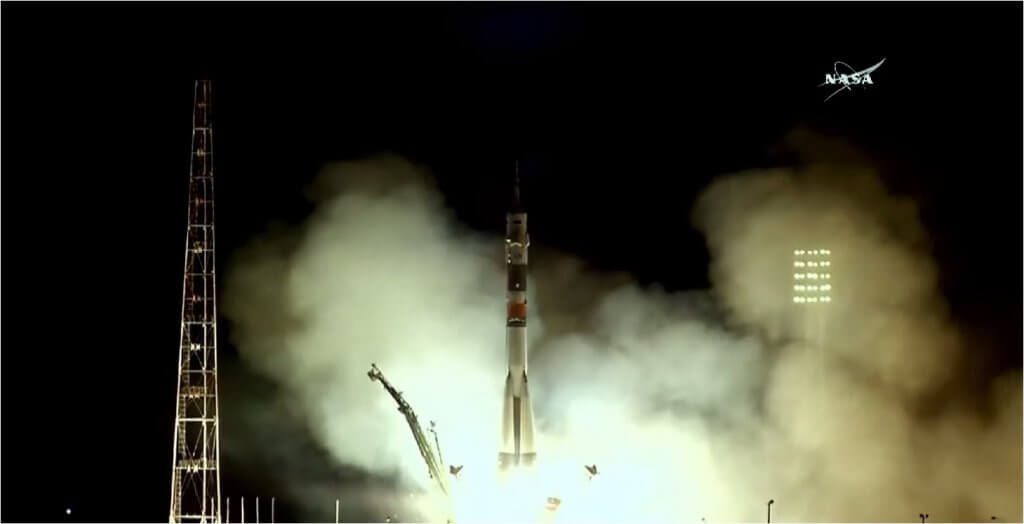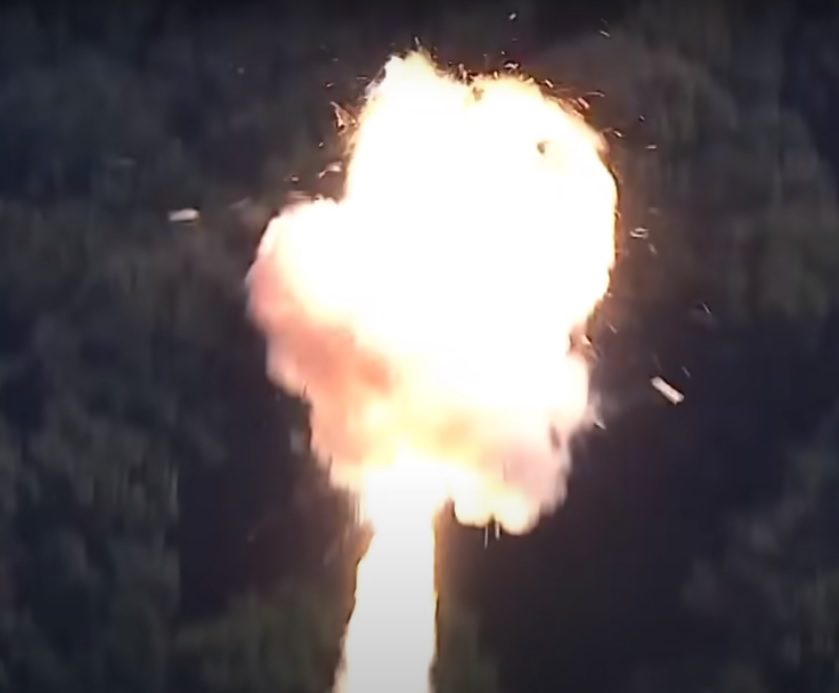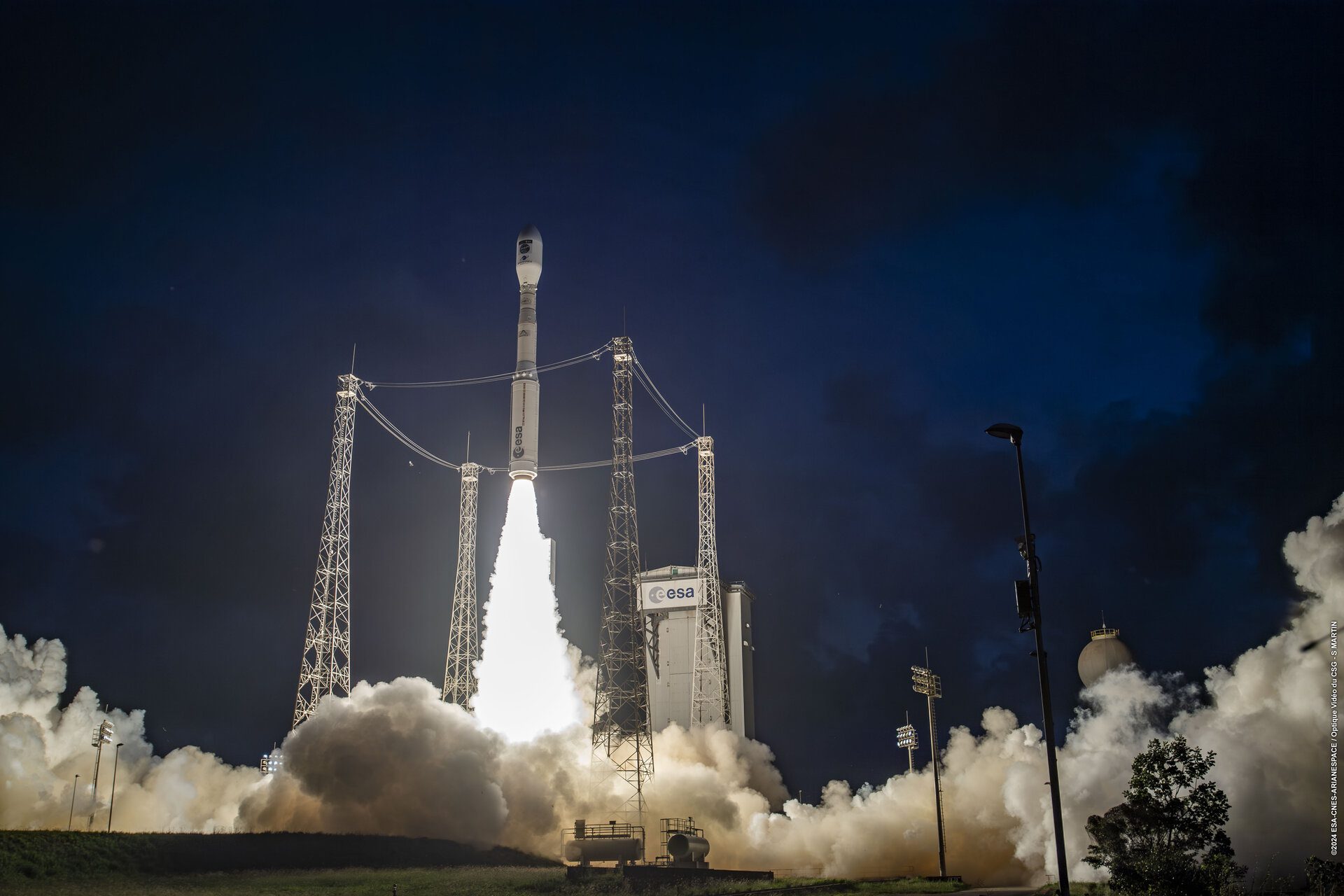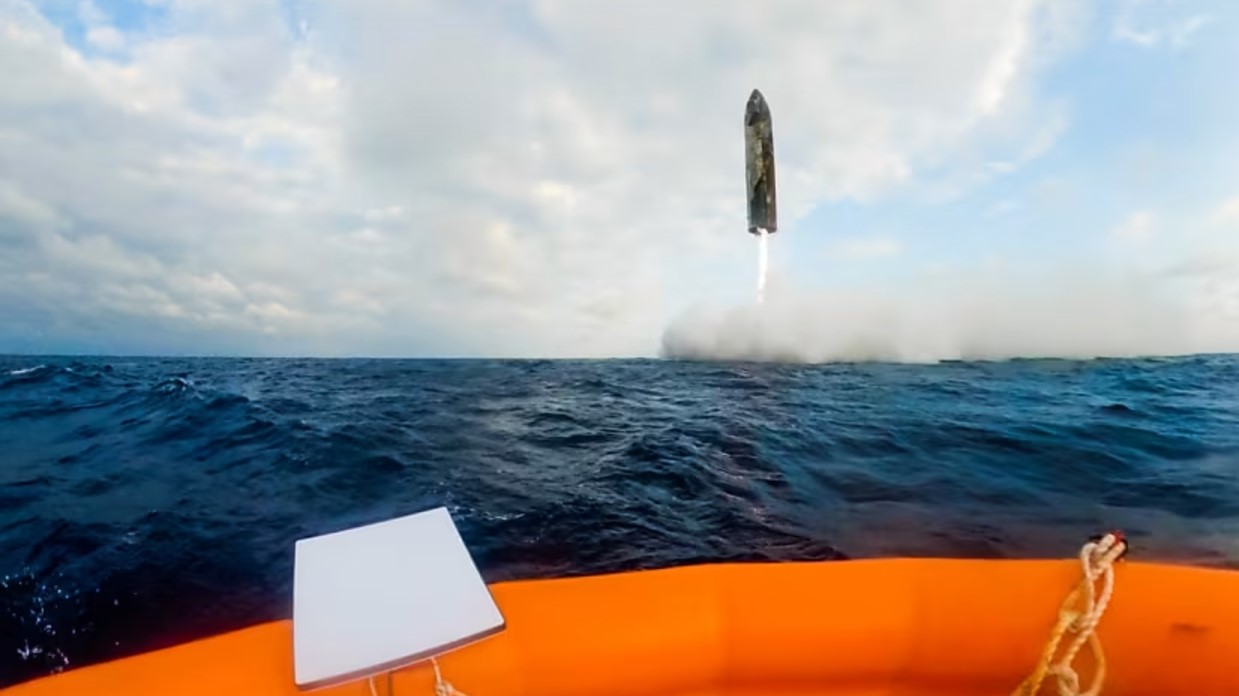Lifting off from the Baikonur Cosmodrome, Kazakhstan, at 2117 GMT, on 12 September, a Russian Soyuz-FG rocket successfully carried its three riders: two NASA astronauts and one Roscosmos cosmonaut, into orbit. Due to the ideal characteristics of the current ISS (International Space Station) orbit, the Soyuz MS-06 craft was able to conduct a quick four-orbit rendezvous with the station, resulting in confirmed docking at the Poisk module at 0255 GMT.
With the arrival of the Expedition 53/54 members Roscosmos cosmonaut Alexander Misurkin and NASA astronauts Mark Vande Hei and Joe Acaba, the ISS now carries a complete six person crew. However, due to the previous decision by Roscosmos to reduce its crew complement by one person, the make-up of the crew is four USOS (US Operating Segment) crew and just two ROS (Russian Operating Segment) members.

A Soyuz FG rocket lifts off from Baikonur carrying crew to the ISS. Courtesy of NASA
Following the arrival of SOYUZ MS-06, the DRAGON CRS-12 cargo craft – that had previously arrived at the station on 16 August – was released from the ISS on 17 September. The cargo craft was first detached from the station using the Canadarm 2 robotic arm, before being released clear of the station at 0840 GMT – the release commands were sent by ESA astronaut Paolo Nespoli. Following release the DRAGON fired its thrusters three times, setting itself for a final de-orbit burn at 1300 GMT to re-enter the Earth’s atmosphere. Currently, the SpaceX DRAGON fills an important technical niche, being the only cargo craft able to bring experiments back to Earth from the ISS. The DRAGON splashed down in the Pacific Ocean shortly after re-entry at 1415 GMT.






